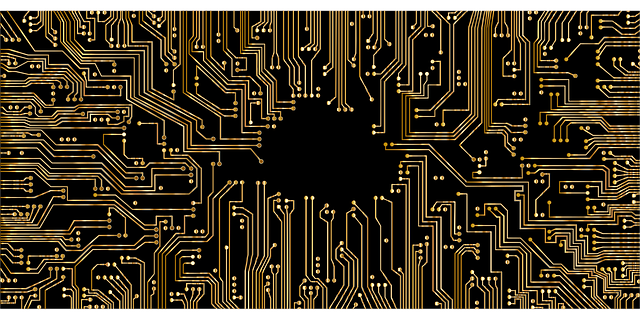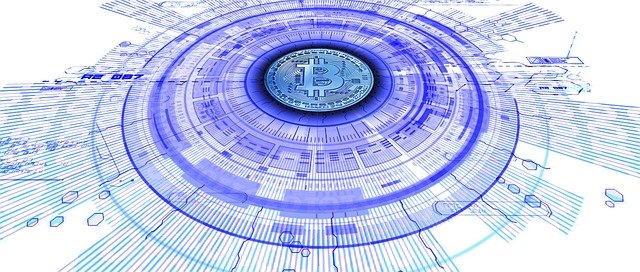
by Don Basile | Apr 29, 2022 | Tech
The 5G rollout is ongoing, but the full implications of that are not yet clear. While experts believe it will hasten the fourth Industrial Revolution, as well as the widespread use of autonomous vehicles and the emergence of smart cities, those developments are still to come.
The more immediate impact will be felt on our smartphones, and to that end several 5G phones have been produced in recent years, and, which is more, they are coming down in price, owing to the fact that semiconductors have grown less expensive than in the recent past. 5G’s speed – it is up to 100 times faster than 4G – will in time combine with its reduced latency to make for better gaming, an enhanced video experience and more innovative apps.
Other 5G consumer devices that have begun to emerge are wireless routers, notably those produced by Samsung in collaboration with Verizon Communications. They will make it possible to have a broadband connection in one’s home, and accelerate the trend toward cord-cutting.
Also increasingly available are 5G laptops, like the ones developed by Lenovo and Samsung.
Further developments no doubt lie ahead, as 5G coverage improves. While the three major U.S. wireless providers – AT&T, Verizon and T-Mobile – all claim they provide nationwide coverage, the truth is somewhat more nuanced.
As of December 2021, 49.2 percent of Americans with 5G devices were connected to the network most of the time, according to analysis by the network testing company Ookla. That’s the best percentage in the world, ahead of The Netherlands (45.1) and South Korea (43.8).
Ookla concluded, however, that in terms of speed the U.S. lagged behind 10 other nations that were early adopters of 5G, at 93.73 megabits per second (mbps). The leaders in that category were South Korea (492), Norway (427) and the United Arab Emirates (410).
The conclusion that can be reached, then, is that not all 5G is created equal – that while T-Mobile continues to provide greater coverage than that of its two rivals, closer examination is required.
As noted on the website CNet.com, there are different versions of 5G – millimeter-wave (mmWave), which offers greater speed but less reliable coverage than other types; low band, which is slower but more reliable; and midband (C-Band), which is faster than low band but more reliable than mmWave.
To date T-Mobile covers 41 percent of the U.S., while AT&T covers 18 percent and Verizon 11 percent. T-Mobile’s coverage is largely of the midband variety, while the other two companies offer low band, with promises of upgrades to midband this year, after investing some $68.8 billion in it during the FCC’s auction in late 2021.
As 5G continues to evolve in the U.S., so too will the consumer market. More devices will be developed, devices that will, for example, allow people to more fully explore things like augmented reality, virtual reality and 3D video experiences. In short, 5G looms as a game-changer, but we’re still in the very early stages of the game. Things have yet to play out fully.

by Don Basile | Nov 4, 2021 | Tech
Picture a world in which your car’s speedometer appears not on the dashboard, but rather on the inside of the windshield. A world in which smart windows adjust their transparency according to the environment. A world in which advanced wearables measure not just data like body temperature and pulse rate but also hormone levels.
That’s the world we are fast approaching, given developments in the field of transparent electronics.
A research team from Australia’s Royal Melbourne Institute of Technology (RMIT) issued a report in April 2021 about a breakthrough in the two-dimensional semiconductor space, and that is expected to make all of this possible, as well as things like transparent solar panels and optical coatings. (An aside about the latter: The hope is that whatever eyewear comes of this, it advances beyond the Google Glass, which created a buzz in the early 2010s but was phased out just a few years later, largely because of privacy concerns.)
Certainly the potential of transparent electronics has attracted the attention of the tech giants, as well as investors. Samsung, Apple, 3M and Cambrios Technology are among those making inroads in the field, and the market for these devices, which stood at a shade over $996 million in 2019, is expected to balloon to $3.8 billion by 2025. That’s an impressive compound annual growth rate of 25 percent, and it’s not expected to slow anytime soon. By 2041, in fact, the market is expected to reach $20 billion.
The RMIT team developed ultrathin beta-tellurite, a high-mobility p-type oxide that according to team leader Dr. Torben Daeneke “fills a crucial gap in the materials spectrum to enable fast, transparent circuits.”
As explained in the report, p-type semiconducting materials are characterized by positively charged electrons, n-type materials by those that are negatively charged, and stacking them atop one another allows electronic devices to function. The issue, however, is that researchers have not been able to find many p-type oxides over the years.
Daeneke’s team built on previous research showing that tellurium could behave as both a metal and non-metal. They were able to synthesize beta-tellurite, then spread a molten layer — one that was just 1.5 nanometers thick — over a surface. Testing showed that it was anywhere between 10 and 100 times faster than any p-type semiconductors that had been previously developed.
The RMIT team built in part upon the work of a team at Saudi Arabia’s King Abdullah University of Science and Technology, which in 2018 developed nanowires so thin that they were transparent. Atif Shamim, Associate Professor of Electrical and Computer Engineering (ECE) and Principal Investigator of the Integrated Microwave Packaging Antennas and Circuits Technology (IMPACT) lab, told the website Phys.org that the idea came to him when he saw his newborn son in an incubator within a maternity ward: How can infants be protected from radiation in such a room, the elder Shamim wondered, while still being visible to their loved ones?
His team’s work revealed a potential answer to that question, and now the RMIT team has gone one step further. So too has the technology as a whole.

by Don Basile | Oct 27, 2021 | Uncategorized
By now, most of us understand how crucial it is to reduce emissions and live sustainably, and are doing our part to reduce our carbon footprint through various means.
It is vital that industries do the same. Here is a summary of the outsized environmental impact that is being made by some of them, and the measures being taken to bring them in line:
- Transportation
Transportation accounts for 29 percent of the total U.S. greenhouse gas emissions. While driving can never be eliminated, emissions can at least be curtailed.
The Environmental Protection Agency (EPA) and the Department of Transportation (DOT) are working together to do the latter, by establishing standards that improve vehicles’ fuel efficiency. Through these regulations, a projected six billion metric tons of emissions will be cut over the lifetime of passenger vehicles sold between this year and 2025. Heavy-duty trucks, meanwhile, project a CO2 emission reduction of 270 million metric tons.
While carpooling, autonomous vehicles and ride-sharing services can also help alleviate this problem, legislative changes could have as big an impact as any.
- Energy
Generating electricity results in 28 percent of U.S. emissions. Coal, natural gas, and petroleum account for nearly two-thirds of our total electricity produced. Renewable energy sources, such as solar, wind, and hydroelectric power, make up a mere 16.2 percent of electricity, but it stands to reason that we can shift our electricity to become more sustainable.
Again, a large part of the EPA’s strategy to combat emissions from electricity involves increasing efficiency of existing fossil-fuel power plants by using advanced technologies or by substituting natural gas or petroleum for coal. In addition, the EPA is seeking to increase end-use energy efficiency, hoping to reduce the total amount of energy needed to power homes, businesses, and industries. These efforts have removed over 290 million metric tons of emissions and saved Americans over $30 million in energy costs.
- Industry
This sector makes up 22 percent of our emissions, whether by direct or indirect means. Direct emissions involve the burning of fuel or chemical reactions that are used to create products, from petroleum being used in making plastics to producing materials like iron, steel, and cement. Indirect emissions refer to the emissions created through the use of electricity to power the machines and facilities that create the products. In addition to this, a third of the emissions from industrial production are a result of leaks from natural gas and petroleum-based systems.
One of the main methods for reducing emissions in this sector is recycling. By using scrap steel and scrap aluminum to reproduce those materials, it saves time and energy that would otherwise be devoted to smelting new aluminum or forging steel. The EPA continues to espouse energy efficiency to reduce emissions, and the use of sensors — part of a larger trend toward the Industrial Internet of Things — can help with leak detection.
While these areas have mostly to do with business and large-picture changes, individuals can still work to reduce their own carbon footprint and to encourage those around them to do the same. By considering sustainability and emission reduction in one’s decisions as a consumer, it could very well lead to shifts in the market and urge businesses to change their practices.

by Don Basile | May 28, 2021 | Tech
As of April 2021, there were an estimated 3.8 billion smartphone users in the world, or nearly half the global population of 7.8 billion. That has implications not only for communication and entertainment, but also safety.
That has been shown during the coronavirus pandemic, as nations like Germany and Ireland have used contact tracing apps to great effect. (That is not true in the U.S., however. Such apps have largely gone unused, in no small part because of privacy concerns.)
Still, smartphone apps have shown potential to keep users safe in other ways, one being in their ability to predict natural disasters. Such events as earthquakes, tsunamis, hurricanes, floods, wildfires, heatwaves, and droughts kill an average of 60,000 people a year. Scientists, as a result, have been extremely interested in developing mechanisms that not only prevent these disasters but also keep humankind at arm’s length from potential negative effects.
Smartphones come with integrated and highly precise sensor technology designed to assess environmental conditions like humidity, temperature, and even ground vibrations. For meteorologists to make sense of such data, they need a huge volume of this information.
Thanks to the Internet of Things (IoT) and blockchain, engineers can collect a treasure trove of data; scientists can consequently use this data to make accurate predictions on prospected weather patterns. This technology can prove crucial in helping predict the potential occurrence of heavy rains and flash floods within an area, for example.
The good thing with such data is that it is accurate and available at a moment’s notice. Smartphones come equipped with GPS technology which can help such meteorologists to determine the particular area affected accurately.
An additional convenience offered by smartphones is their ability to disseminate information as accurately, precisely, and timely as possible. In case, for instance, meteorologists accurately predict the occurrence of natural disasters within an area, they can immediately disseminate cautionary information to the residents, warning them of impending floods, heatwaves, fires, or even hurricanes. Such information is crucial in helping to reduce and manage the adverse effects of natural disasters.
The benefits that smartphones provide in the entire weather industry are further enhanced by the fact that these devices can remotely transmit data through satellites. Thanks to blockchain technology, the data can be instantly processed and even reliably used to make predictions through artificial intelligence and machine learning. The observed weather patterns can be compared to previous occurrences to predict impending disasters accurately.
For instance, if the data shows characteristic patterns in temperatures, atmospheric tides, and atmospheric pressure, then this information can be used to predict the occurrence of hurricanes. The consistent relaying of smartphone data thereafter can be used to determine the prospected path of such a developing hurricane, thereby offering advance cautionary information to the public.

by Don Basile | May 17, 2021 | Uncategorized
Blockchain will forever be tied to the cryptocurrency bitcoin, and understandably so. That, however, is rapidly changing. CB Insights pointed out in April 2020 that over the three previous years, worldwide spending on blockchain solutions had nearly tripled, and predicted that annual outlays would reach $16 billion by 2023. That same organization went on to list no fewer than 58 businesses the technology could impact — everything from banking (naturally) to ride sharing to entertainment.
This is far from a novel viewpoint. Back in 2019, Computerworld predicted that decentralized ledger technology (DLT) such as blockchain exhibited the same potential once shown by TCP/IP, the very foundation of the world wide web. And indeed, by the end of 2020 top organizations in virtually every sector had implemented DLT.
Here are four sectors in which blockchain could make a particularly significant difference:
- Elections: It is not an exaggeration to say that some of the furor surrounding the 2020 U.S. presidential election could have been avoided by using blockchain — that fraud claims would have been a non-starter if e-voting were in place. It is safe, secure and can be done from home. It allows for accurate tracking and counting, as votes cast on a blockchain leave an audit trail. And the thing is, it has already been tried on a smaller scale, as West Virginia used it in a 2016 primary. In addition, a blockchain platform developed by an organization called Follow My Vote was used in a presidential election in Sierra Leone in 2018, and deemed accurate.
- Healthcare: There are those who wonder if healthcare might not be the ultimate use case for blockchain, given issues like patient misidentification and providers’ inability to safely share data. Another thing to consider is the sheer volume of data that must be processed, particularly during a healthcare crisis like the coronavirus pandemic. Any of these matters can result in errors and unfavorable outcomes, but they can be avoided with blockchain technology. One prominent example is the manner in which electronic medical records can be accessed by multiple parties. In addition, a blockchain startup called Hu-manity has partnered with IBM on a ledger that according to a news release will enable patients to “claim property rights to their personal data,” allowing them to decide who sees it, and when.
- Real Estate: In 2017 the startup ShelterZoom became the first company to introduce a blockchain-based platform in the real estate space, one that according to a release at the time allows all parties “unprecedented speed, convenience, security and transparency” from beginning to end of a transaction. (And note that transparency is a particular pain point in this sector.) Other companies, like Propy and Ubitquity, have followed ShelterZoom’s lead, well aware that in addition to the aforementioned advantages, blockchain solutions greatly reduce the need for paper record-keeping.
- Supply Chain Management: Blockchain enables any party in the supply chain management sector to track a product throughout its journey, which Deloitte notes brings with it many advantages. A manufacturer can, for instance, ensure that its standards are met. Efficiency is improved. Monetary and material losses are decreased. There is less paperwork. Ultimately the consumer benefits from a better product, and one that is delivered in a more timely fashion. That in turn builds brand loyalty.
In short, the sky would appear to be the limit for blockchain, in any number of sectors. Far from being simply a cryptocurrency platform, it looms as a game-changing technology that allows for greater efficiency and security.




